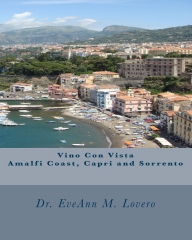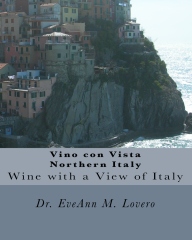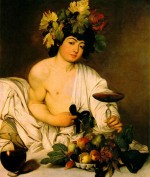What a great day to Spring to Loire, This annual French Wine Tasting will highlight the diversity of the region’s wines in the Atrium of the J.Parker Hotel in Chicago. Taste plenty of French wine from the Loire Valley and attend seminars guided by experts.
When: Thursday April 12, 2018 from 11:00 am to 4:00 pm
Where: 1816 N. Clark Street in Chicago
The central part of the Loire Valley between Sully-sur-Loire and Chalonnes-sur-Loire in France was added to the UNESCO World Heritage Site List in 2000.
The Loire is the longest river in France and it is characterized by elegant historic chateaux and 300 miles of distinctive terroir that supports numerous vineyards along the river banks. This region is the leading producer of white French wines. The region is cloaked with lovely vineyards and micro-climates that produce distinctive varietals and wine styles. It is one of the most diverse wine regions in France with 69 appellations that include red, white, elegant sparkling wines and refreshing rose wines. There are distinct climates and a variety of soil types that divide the Loire Valley into 5 distinct regions.
The first vines were probably planted during Roman occupation 2000 years ago. Afterwards, the Augustinian and Benedictine Brothers enhanced the wine-making practices in this region.
I love the interesting Rose wines. There are also rich and earthy wines made from 100% Cabernet Franc. Cabernet Franc is one of the world’s major red grape varieties and was introduced to the region in the 11th century. It is frequently blended with Cabernet Sauvignon and Merlot to produce a Bordeaux style wine. In the Loire region, it is not blended with other grapes so it is lighter in color than Bordeaux blends. It is used in the development of Chinon and certain roses in the Touraine appellation.
I’ve met Philippe Porche at previous events. He is charming wine-maker from the Saumur-Champigny region in Parnay located on the south bank of the Loire River that was decreed an AOC in 1957. Cabernet Franc is the predominant grape in the area. He and his viticulturist wife founded the estate in 2005 and produce some interesting Cabernet Franc wines. I favored the garnet-colored full-bodied and velvety “Le Fou du Roi” that was aged in oak.
Plan a trip to the Loire Valley and explore some of the majestic castles with spectacular medieval architecture: Chambord, Cheverny, Villandry and Chenonceau.
1. Villandry was built by the same man that designed much of Chambord (François I Finance Minister Jean Le Breton). Villandry is actually most renowned for what is outside of the castle. However, while Chambord remains Le Breton’s main achievement in construction, it is Villandry where he used all of the Renaissance gardening tricks he had picked up while working as an ambassador in Italy. The castle remained in the Le Breton family until the early 20th century, when it was purchased by Joachim Carvallo, who spent a whole of time, money and devotion to rebuilding, expanding and repairing the beautiful gardens. Today the gardens at Villandry are considered one of the best examples of Renaissance style gardens in the world and boasts a water garden, flower gardens and vegetable gardens laid out in formal patterns created with low box hedges—making it a must-see on any castle tour of the Loire.
2. Chambord is one of France’s most recognizable castles known for its distinct French Renaissance architecture, which blends late French Gothic and newer Italian Renaissance motifs. Chambord is also the largest castle in the Loire. Chambord was first built by King Francois I as a hunting lodge (I know you picture a hunting lodge as being more of a log cabin than a magnificent model of French Renaissance architecture, but it was a KING’S hunting lodge, after all). Chambord has 440 rooms, 365 fireplaces and 84 staircases. It is most known for its façade, which through more than 800 sculpted columns was designed to look like the skyline of Constantinople, with 11 kinds of different towers and different types of chimneys. Chambord also has a double-helix staircase that serves as the centerpiece to the castle and was rumored to have been designed (or inspired) by Leonardo da Vinci during his time at nearby Clos de Luce.
4. Chenonceau is one of my favorite castles in the Loire Valley. Chennonceau was built in 1513 by Catherine Briçonnet and later embellished by Diane de Poitiers and Catherine de’ Medici, the Chateau de Chenonceau contains exquisite interiors and has idyllic gardens that look over River Cher.
Originally a small castle along the banks of the River Cher, the castle got its current design in the 16th century when it was seized by the crown for unpaid debts. In 1547, King Henri II offered the castle to his mistress, Diane de Poitiers. and she had Chenonceau’s arched bridge built. It spans the river. She is also responsible for the gorgeous flower and vegetable gardens set in buttressed stone terraces.
Upon King Henri II’s death in 1559, his clearly bitter widow and regent Catherine de Medici had Poitiers expelled from the castle and she moved into the scenic spot herself, adding even more extensive gardens. Since then the castle was privately owned for years and even used as a make-shift hospital for soldiers during WWII; its gallery bridge’s southern door provided access to the unoccupied Free Zone while the castle’s main entrance was in the Nazi occupied zone. Chenonceau today is one of the most visited and popular of the Loire castles and its Renaissance architecture and well-lit gallery and beautiful gardens.
5. Amboise is perched up on a strategic point along the Loire River and was originally built as a fort. In 1434, the castle was seized by King Charles VII after its owner (from which the castle got its name), Louis Amboise, was convicted and killed for supposedly plotting against the King. In the 15th century that the castle was lavishly rebuilt and added onto, starting with its late French Gothic architecture, until Italian builders were brought in and the castle’s style changed to Renaissance.While the castle became a favorite retreat for many French Kings (King François I was raised primarily at the castle), Amboise’s most famous guest was Leonardo da Vinci, who came to the castle in 1515 as a guest of the King and stayed in nearby Clos de Luce. What is most notable about Amboise, however, is known for its unique blend of Gothic and Renaissance architecture and large formal garden.
6. Blois was always a favorite getaway town for French kings; the castle in this quaint little Loire town is best known as the birthplace of King Louis XII as well as the primary residence for Henri IV’s exiled wife Marie de Medici, and later for the Duke of Orléans (brother of Louis XIII and uncle of Louis XIV). However, the castle has a long and prominent history and its Renaissance architecture and picturesque spot along the banks of the Loire make it a definite worthwhile stop on your Loire castle tour. In fact, the castle was the main resort for the French court during the 16th century and was also the location for the famed States General meetings held by Henri III in 1576 and 1588, where several prominent nobles were sentenced to death. The castle also plays a role in the famous Three Musketeers series by Alexandre Dumas as an important retreat for some of France’s most famous and powerful kings.
7. Cheverny was also given to Diane de Poitiers by her lover, King Henri II. Chenonceau was her favorite and primary residence. Poitiers sold Château de Cheverny to the former owner’s son who had originally built the castle between 1624 and 1630. The castle passed between owners until 1914, when the owner made it the first castle to be opened to the public; the family still owns and operates the castle to this day. The castle is renowned for its beautiful interiors and collection of furniture, tapestries and rare objects d’art. There is also a pack of about 70 dogs that are kept on the grounds and taken out for hunts twice weekly.
8. Clos Lucé is not really a “Château de la Loire”; it is a large mansion located just 500 meters from the Château d’Amboise by way of an underground passageway and is notable mostly for its most famous resident, Leonardo da Vinci. In 1515, King François I invited the Italian painter and inventor to Amboise and offered him the manor to use as a home and studio. When Da Vinci arrived in 1516 he came with three paintings, including the famed Mona Lisa, and lived in the mansion for the last three years of his life. Visitors to Amboise should not hesitate to hop on over to Clos Lucé, where you can peruse a museum that includes forty models of various machines designed by Leonardo.
9. Langeais is a perfect example of Medieval French architecture. It is located near the Brittany frontier and had a significant role in the battle between the French and English. The structure dates back to the 10th century and was built on a cliff which offered a strategic location overlooking the Loire River. The castle was actually fortified and expanded under the rule of Richard I of England (when English kings ruled this region of France) until King Philippe II of France recaptured the castle in 1206. The castle was also where Anne of Brittany and King Charles VIII wed, thus uniting France and Brittany. Today, the dark and ominous looking castle is replete with a great collection of Medieval tapestries.
Vino Con Vista Travel Guides can be purchased at these sites















